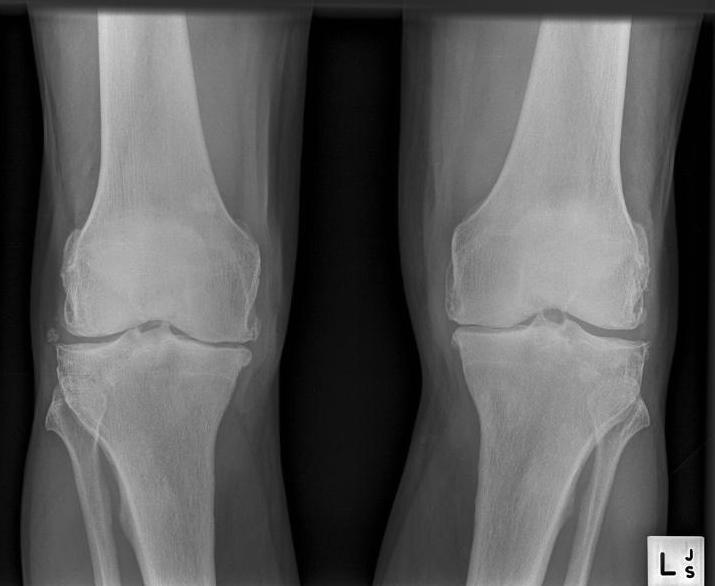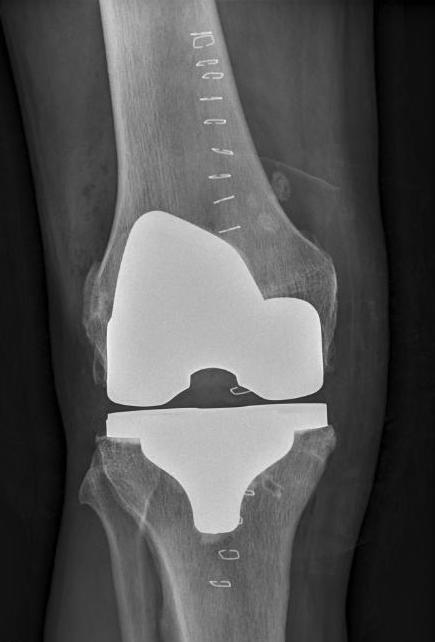A knee replacement is used to alleviate the pain of an arthritic joint. Knee replacements may involve part (unicompartmental) or all of the knee joint surfaces depending upon individual patient characteristics. An incision (cut) is made on the front of the knee to allow the surgeon access to the knee joint. The damaged and painful areas of the thigh bone (femur), lower leg bone (tibia) and knee cap (patella) are removed and replaced with artificial components. A computer-navigation laser system is used to ensure precise placement of the knee implants during the surgery.
Rigorous post-operative physiotherapy is prescribed in order to maximise knee function. Patients may fully weight bear from the day of surgery.





